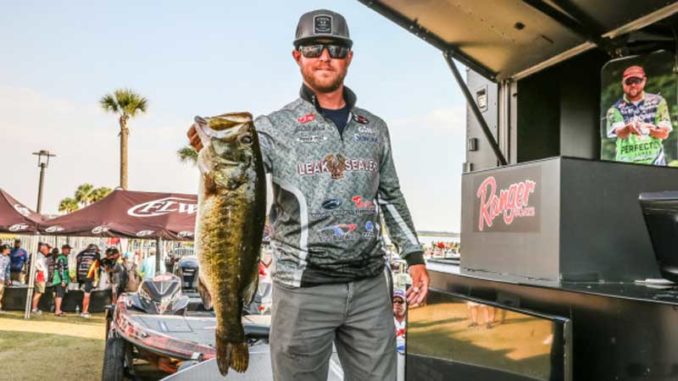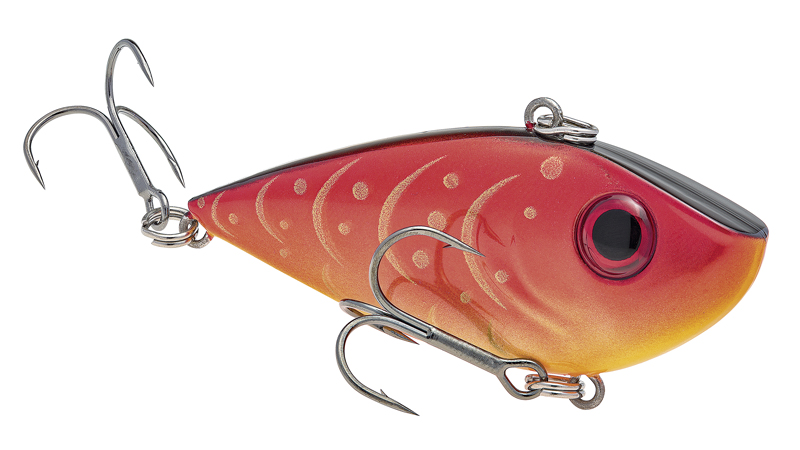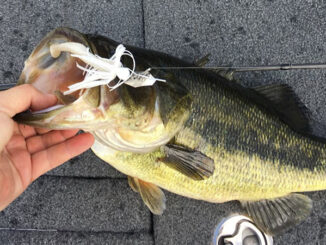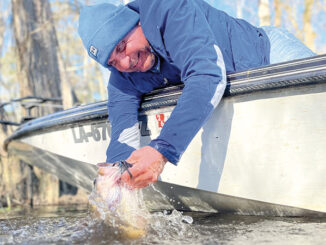
Red Eyed Shad takes big toll in challenging winter months
There is a fine art to fishing certain artificial lures to tap bass populations, particularly during one of coldest, most-challenging months for bass catching.
One of those artificial lures is a lipless crankbait, namely the Strike King Red Eyed Shad, specifically the Red Eyed Shad Tungsten 2-Tap. If you think that’s a stretch, take into account the words from one of Louisiana’s rising young bass pros, Dakota Ebare of Watson.
It isn’t just chunk-and-wind, according to Ebare, a 27-year-old who recently completed his first year on the FLW Tour. It’s all about the line, the reel, the rod, the hooks, the speed and cadence of the retrieve and, of course, the color of the lipless crankbait.
“There’s definitely an art to fishing a lipless crankbait,” said Ebare, who has had plenty of success on Toledo Bend and Sam Rayburn with the Red Eyed Shad, especially the Tungsten 2-Tap version, which has a unique tungsten sound chamber that emits a distinctive double-tapping cadence on the retrieve. He has learned the nuances of varying the retrieve — slowly, yo-yoing or burning it — to trigger bites.
“Pay attention to how you were retrieving it when the bass bit,” he said. “There are different cadences when you reel that bait, and it makes a huge difference day-to-day. The main thing is to keep in contact with the grass (if there is any). That’s the key.”

Fishermen who have a lot of success with lipless crankbait have perfected the technique to match wits with oft-finicky bass.
“There are some guys who are really good at throwing them,” he said. “They may have three lipless crankbait setups, all with the same exact setup — rod, line and reel-speed ratio — on the front deck,” he said.
That way, if something happens to the rod you’re using — like a rat’s nest after smacking your partner’s rod — you can pick up another with the same characteristics, he said.
“That lipless crankbait bite is so finicky. You want to be able to duplicate that setup, setup to setup. Dial in on the little details. That’s what makes a difference,” he said.
Model and color options
Ebare uses 1/4-, ½- and ¾-ounce models of the Red Eyed Shad. He choice depends on the size of the forage, which is crawfish most of the time. Crawfish are high in protein and “an easy snack for them,” he said.
The ¼-ounce model comes into play when he targets bass in shallow hydrilla. That way he can keep the lipless crank bait up in the water column and still tick the grass.
“The ½-ounce is kind of the standard size I throw. Sometimes I go ¾- to keep the bait down and get bigger bites,” he said.
Hydrilla isn’t necessary, but it helps, he said, adding, “Two things are normal in January … hydrilla and a lipless crankbait. Those two just go together really well. You can get those bites even when it’s really cold.”
His top colors are red-hued, like Rayburn Red, followed by natural shad and gold/black.
“A good fisherman knows color can be different every day and may change hour to hour,” said Ebare, who fishes the Red Eyed Shad on a heavy action, 7-foot-3 Fast Hammer rod when he’s around grass because he can snap the lipless bait out of the grass. Whenever’s he’s fishing an area void of grass he switches to a medium-action model.
Ebare ties it to 16-pound test Sunline FC Sniper fluorocarbon line but switches to a heavier monofilament line if he wants to fish higher in the water column. He uses a Shimano reel with a 6.3:1 ratio.
He also likes to change out the treble hooks and replace with a short-shank Owner Stinger (ITX45) treble of a similar size.


